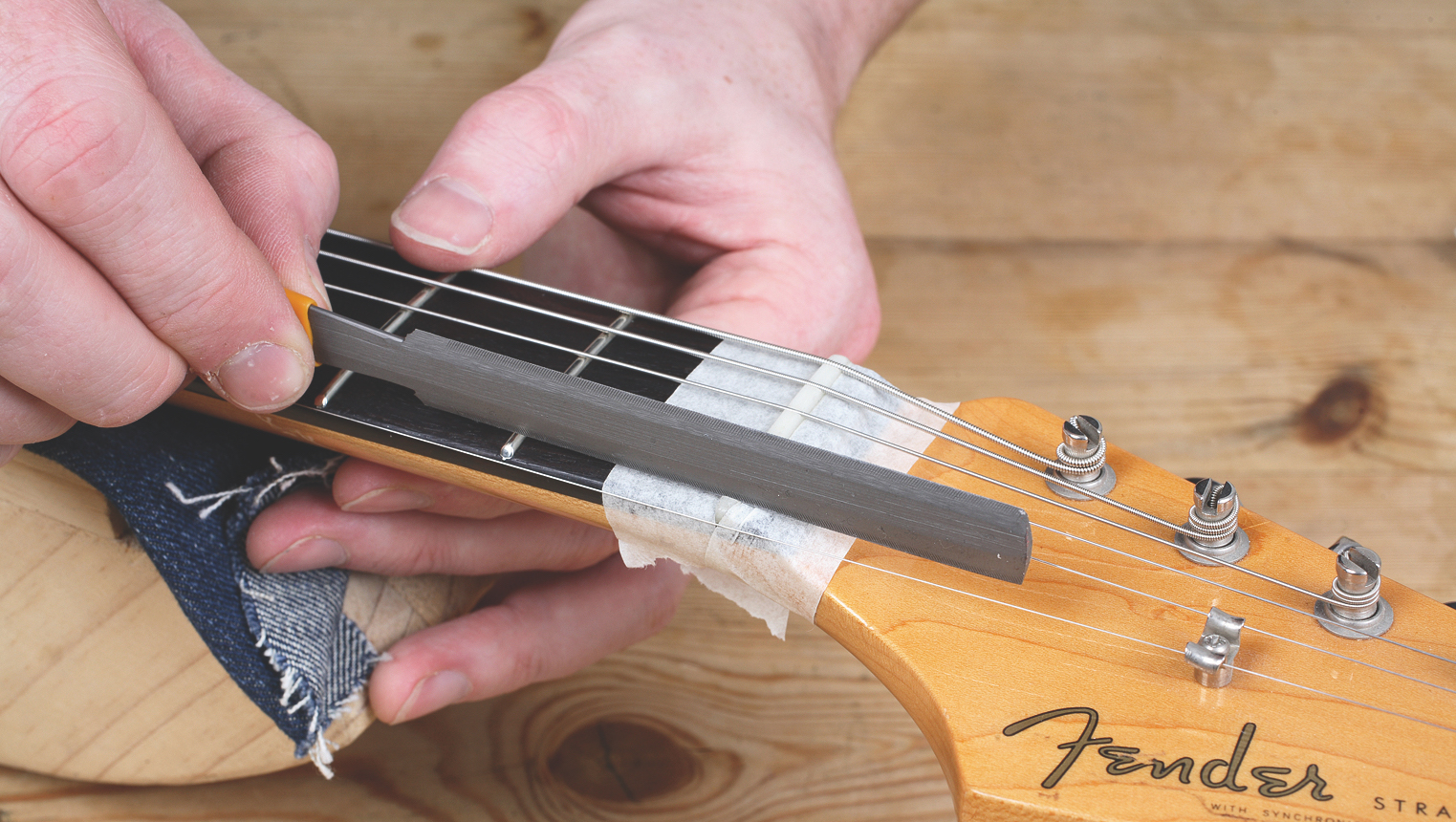Three Things Guitarists Can Do to Sound Better Right Now
These relatively simple fixes can make a huge difference.

In this classic GP column, veteran guitar tech Gary Brawer points out a trio of relatively simple fixes that can instantly change your sound for the better.
Get In Tune And Stay In Tune
The most common questions I get involve playing in tune. If you ever hear a clicking or “tinking” when tuning, take a moment and lube your nut slots. A sharp pencil, Big Bends Nut Sauce, GHS GraphitALL, or Stewart MacDonald Guitar Grease will get the job done.
I should put a sticker in every guitar case that says, “Did you remember to lube your nut today?”
Because being in tune is so important, intonating a guitar should be something every player should learn to do. If your guitar neck has too much bow in the wrong spot, or high strings at the nut, playing in tune will be a huge challenge. Adjusting your trussrod is another thing guitarists should be able to do.
Unfortunately, leveling your frets and getting your nut slots the correct height is not so easily done at home, but it can make a tremendous difference in playability and tuning.
Deal With Your Crackly Jack, Jack
A crackly or intermittent jack on an electric guitar, amp, or pedal can usually be fixed by rolling up a two- or three-inch piece of 320- 600 grit sandpaper into a smaller than cigarette-sized roll and sanding out the inside of the jack.
Be sure to roll it up small so it will fit deep enough into the jack to sand the contact where the tip of the cable touches the jack. If you have some pot cleaner or a little oil, you can put some on the sandpaper too.
The reason this works is in time, the inside of the jack oxidizes or rusts to the point that little or no contact is made. It is a simple fix that can bring a guitar, amp, or stompbox back to life in a flash.
Eliminate Buzzing Strings
On guitars that use small screws to set the bridge height – very common on Fender-style guitars – it is not unusual for them to slip and have the saddle slowly work down until the string is no longer playable. You can use a toothpick to apply a very small drop of nail polish or Loctite to the top or bottom of the screw thread.
Get The Pick Newsletter
All the latest guitar news, interviews, lessons, reviews, deals and more, direct to your inbox!
“Write for five minutes a day. I mean, who can’t manage that?” Mike Stern's top five guitar tips include one simple fix to help you develop your personal guitar style
"It’s like you’re making a statement. And you never know where it’ll lead." Pete Thorn shares the tip that convinced Joe Satriani he was the right guitarist for the SatchVai Band










